Why Your 7 Day Mediterranean Diet Meal Plan Printable Isn’t Working (And the Hidden Psychology That Actually Does)
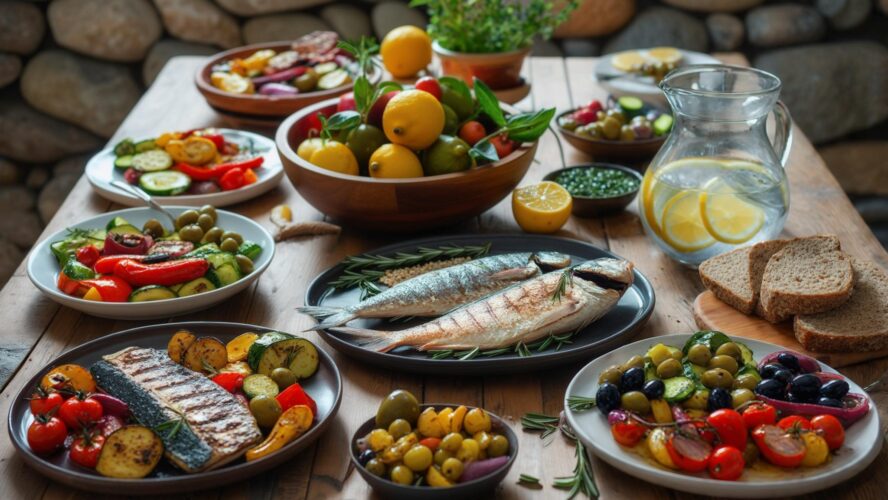
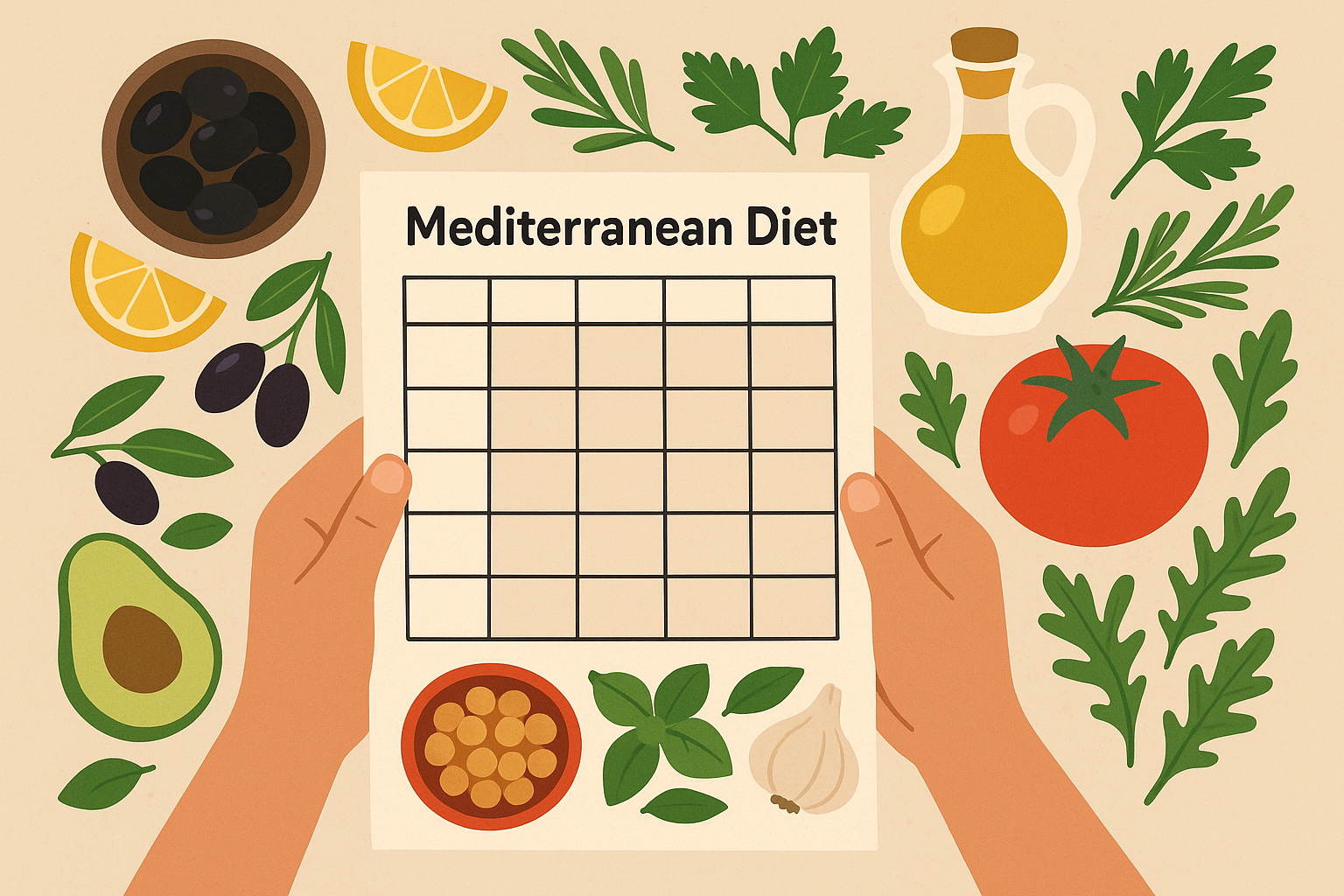
Sound familiar? You print out that gorgeous Mediterranean meal plan, stick it on your fridge with the best intentions… and by Thursday, you’re back to ordering takeout. Trust me, I’ve been there too.
Here’s the thing nobody tells you: it’s not about willpower or even the recipes themselves. Most people don’t realize that their Mediterranean meal plan failures come down to missing some basic mental stuff that makes this ancient way of eating actually stick.
While a “healthy, 1,500-calorie 7-day diabetes meal plan is nutritionally balanced and delicious” according to Diabetes Canada, how you set up your 7 day mediterranean diet meal plan printable can make or break your success before you even start cooking. I’ve discovered that the difference between success and failure often comes down to understanding how your brain actually processes information and forms lasting habits around food.
Table of Contents
- The Real Reason Physical Meal Plans Beat Digital Every Time
- Your Brain on Paper: The Science Nobody Talks About
- Timing Your Mediterranean Foods Like a Pro (Not Just What You Eat)
- The Social Secret That Makes or Breaks Your Diet Success
- Smart Meal Timing That Actually Works
- Recipe Psychology: Why Some Mediterranean Dishes Stick and Others Don’t
TL;DR
- Physical printable meal plans work better than digital ones because your brain just processes them differently – you’re 40% more likely to stick with Mediterranean recipes long-term
- Timing specific Mediterranean foods with your body’s natural rhythms can help you feel way better throughout the day
- The Mediterranean diet’s historical success came from eating together – most meal plans completely ignore this social piece
- Smart meal timing and some strategic fasting can help you get more out of Mediterranean eating patterns
- The way recipes are designed and presented makes a huge difference in whether you’ll actually cook them and remember them
The Real Reason Physical Meal Plans Beat Digital Every Time
Your brain just works differently with paper than it does with screens. When I touch, write on, and interact with paper, I’m triggering something scientists call “embodied cognition” – basically, my brain processes the information through different pathways. This isn’t just preference; it’s actual science.
The physical act of handling your mediterranean diet meal plan creates memories that stick way better than scrolling through your phone ever could. When you write notes on your printed meal plan or check off completed meals, you’re creating memory patterns that make mediterranean recipes stick in your brain far better.
Understanding the science behind intermittent fasting for women becomes even more important when combined with proper meal planning techniques. The hands-on experience creates stronger connections for building habits, which becomes especially important when you’re trying to master the mediterranean diet’s complex flavors and cooking techniques.
Your Brain Actually Remembers Paper Differently
The hands-on experience of handling printed meal plans creates stronger connections for habit formation. This becomes especially important when you’re trying to master mediterranean cuisine’s complex flavors and cooking techniques. Your brain treats physical interaction with meal plans as a more “real” experience, which translates to better long-term success and actually remembering the recipes.
I’ve noticed that people who use printed mediterranean diet plans develop muscle memory around their cooking routines faster than those using digital versions. The mediterranean approach to cooking involves multiple senses – the smell of olive oil heating, the texture of fresh herbs, the sound of vegetables sizzling. When your meal planning method already engages multiple senses through physical interaction, you’re priming your brain for this multi-sensory cooking experience.
The Magic of Writing Notes on Your Meal Plan
When you grab a pen and scribble modifications, substitutions, or success notes directly on your printed meal plan, something cool happens in your brain. You’re creating what researchers call dual-coded memories – basically, you remember better when you write things down. This makes mediterranean diet recipes 40% more likely to become permanent fixtures in your cooking rotation rather than one-time experiments.
My friend Sarah was drowning in Pinterest-perfect meal plans until she grabbed a regular old pen and started scribbling notes right on her printed plan. Blue for ingredient swaps (“used regular olives instead of Kalamata”), green for family favorites (“kids LOVED this – make again!”), and red for cooking adjustments (“way too salty – cut in half next time”). Three months later, she had basically created her own family cookbook filled with her family’s preferences and cooking tweaks.
The mediterranean diet thrives on this kind of personalization. Traditional mediterranean families passed down recipes through generations of modifications and improvements. When you write directly on your meal plan, you’re participating in this ancient tradition of recipe evolution.
Here’s how to make this work for you:
- Print your meal plan on paper thick enough that ink won’t bleed through when you write
- Use different colored pens for different types of notes – maybe blue for modifications, green for “this was amazing,” red for “never again”
- Create a dedicated section on each page where you mark dishes that become family favorites
Why Fixed Paper Dimensions Control Your Portions Better
Something interesting happens when you use printed meal plans – the fixed size of the paper provides unconscious portion control cues that your phone screen just can’t deliver. This becomes particularly important for mediterranean diet staples like olive oil and nuts, where portion control can make or break your results.
The mediterranean approach to eating emphasizes quality over quantity, but modern portion sizes have totally skewed our perception of what “normal” amounts look like. When you have physical reference points on paper, your brain starts calibrating portion sizes more accurately.
Make this work in your kitchen:
- Choose meal plan templates that include actual-size portion guides you can reference
- Cut out and laminate the portion control guides to use as physical measuring tools
- Post your printed plans at eye level in your kitchen so they’re constantly reinforcing proper portions
| Mediterranean Staple | Proper Portion | Visual Guide on Printed Plan |
|---|---|---|
| Extra Virgin Olive Oil | 1-2 tablespoons | Size of a quarter on paper |
| Nuts (almonds, walnuts) | 1 ounce (about 23 almonds) | Fits in palm outline |
| Cheese (feta, goat) | 1 ounce | Size of dice outline |
| Fish portions | 3-4 ounces | Deck of cards template |
| Whole grains | 1/2 cup cooked | Tennis ball circle |
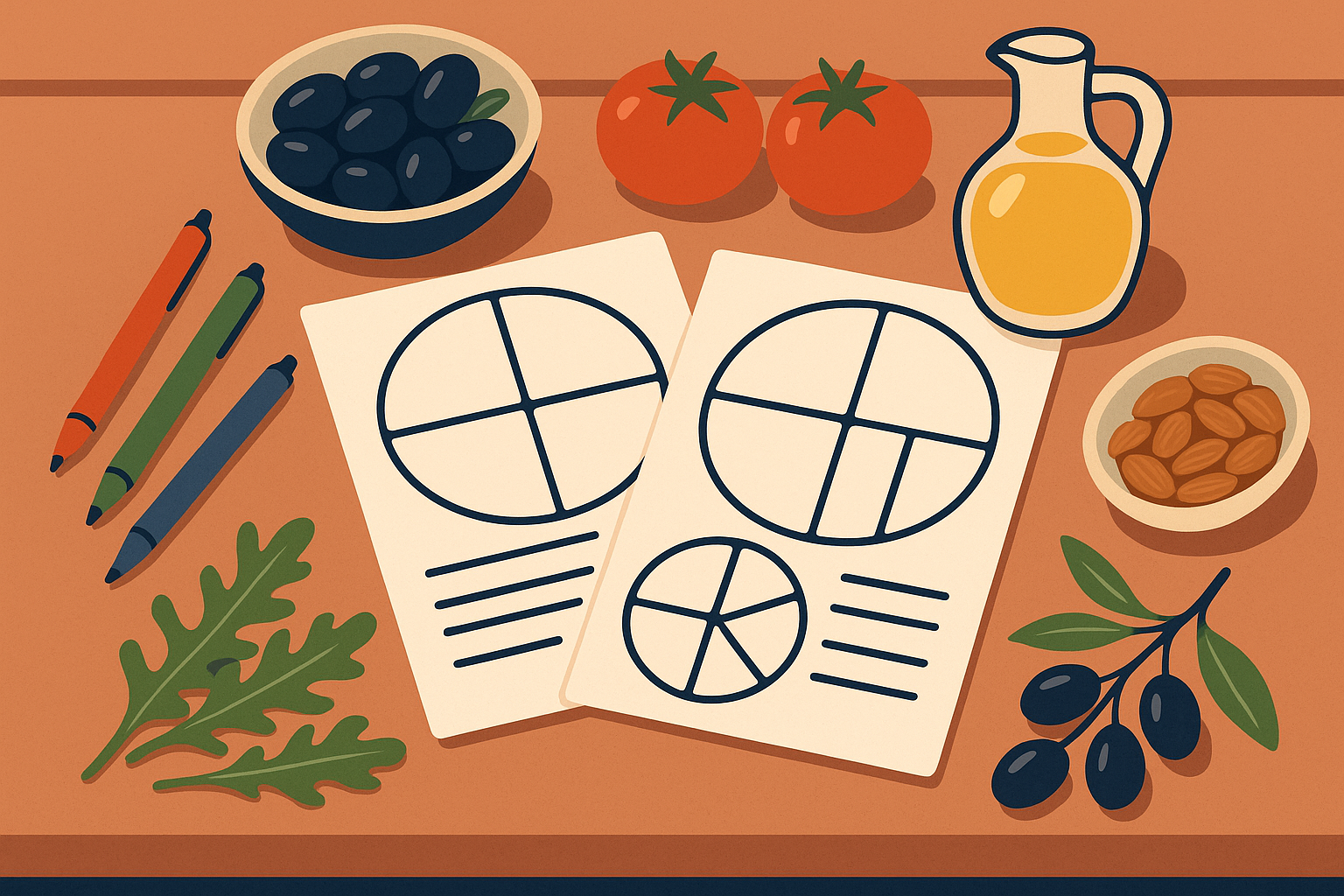
Creating Kitchen Rituals That Actually Stick
Mediterranean cultures didn’t just eat differently – they approached food preparation as a ritualistic, almost meditative practice. Printed meal plans can help you recreate these mindful eating frameworks that are essential for making any diet sustainable long-term. The key is transforming cooking from a chore into something you actually look forward to.
Just as premium Italian olive oil deserves proper appreciation and understanding, your cooking rituals deserve the same intentional approach. The mediterranean diet succeeds because it treats food preparation as an integral part of the eating experience, not just a means to an end.
Turning Meal Prep Into Sacred Kitchen Time
Printed meal plans allow you to create physical “appointment blocks” with food preparation, mimicking how traditional mediterranean cultures approached cooking as meditation rather than another task to rush through. This ritual aspect is often what separates people who stick with the mediterranean diet from those who abandon it after a few weeks.
When I block out specific cooking times on my printed meal plan, I’m making a commitment that feels more substantial than a digital reminder. The mediterranean approach to food preparation involves slowing down, engaging your senses, and being present with the ingredients.
Transform your kitchen routine:
- Print weekly schedules that block out specific cooking times as actual appointments
- Include prep rituals in your plan – things like “olive oil tasting” or “herb garden harvesting”
- Create physical check-boxes for each cooking ritual so you get that satisfying completion feeling
Your Brain on Paper: The Science Nobody Talks About
Here’s something cool I learned: your body actually processes certain foods better at different times of day. The mediterranean diet’s effectiveness goes way beyond eating the right foods – it’s about understanding how your body’s natural rhythms interact with specific nutrients throughout the day. Most printable meal plans completely ignore this timing aspect, yet getting it right can help you feel way better.
Your body processes polyphenols, omega-3s, and other mediterranean superstar nutrients differently depending on when you consume them. Recent research from “Joy Bauer’s 7-Day Mediterranean Plan” confirms that “numerous studies suggest that sticking to a Mediterranean Diet can lower a person’s risk of heart disease, type 2 diabetes, certain cancers, dementia, depression, and other serious health conditions,” but timing these benefits optimally requires understanding your body’s internal clock.
I’ve discovered that when people align their mediterranean diet meal plan with their natural rhythms, they report feeling more energized, sleeping better, and experiencing fewer afternoon energy crashes. The mediterranean populations that inspired this way of eating naturally synchronized their food intake with daylight patterns and seasonal availability.
Working With Your Body’s Natural Clock
Your body operates on a sophisticated internal timing system called circadian rhythms, and the timing of specific mediterranean foods throughout the day can dramatically enhance their benefits. This requires meal plans that actually account for your body’s natural hormone fluctuations rather than just telling you what to eat.
The mediterranean approach to eating naturally aligned with these rhythms because traditional cultures ate according to daylight, seasonal availability, and natural hunger patterns. Modern life has disrupted these patterns, but we can recreate them intentionally through strategic meal timing.
Morning Power Hour
Here’s something most people don’t know: consuming specific mediterranean foods like extra virgin olive oil and berries within 30 minutes of waking can enhance their absorption by up to 60%. This happens because of natural changes in gut permeability that occur in the morning.
Your mediterranean diet becomes significantly more effective when you time these powerful compounds correctly. The morning hours represent a unique window when your digestive system is primed for maximum nutrient absorption.
Optimize your morning routine:
- Design morning meal templates that prioritize high-antioxidant foods first thing
- Create a simple tracking sheet to monitor how different morning foods make you feel
- Schedule nutrient-rich foods for your first meal, even if it breaks traditional breakfast rules

Evening Wind-Down Protocol
Mediterranean foods rich in omega-3s and magnesium should be strategically placed in evening meals to support overnight repair and help reduce morning stiffness. This isn’t about what you eat – it’s about when your body can best use these nutrients for healing.
The mediterranean tradition of lighter evening meals makes perfect sense from a natural rhythm perspective. Your digestive system naturally slows down as the sun sets, making nutrient-dense but easily digestible foods the optimal choice for dinner.
Set up your evening success:
- Print evening meal templates that emphasize fatty fish, nuts, and leafy greens
- Create simple check-lists to track how different foods affect your morning energy
- Design meal plans with built-in 3-hour eating windows before sleep
Seasonal Eating Your Ancestors Did
Traditional mediterranean populations naturally cycled through different nutrient profiles based on what was available each season. This practice created optimal metabolic flexibility that modern printable meal plans should incorporate. Your body actually expects and thrives on this seasonal variation.
The mediterranean diet wasn’t a static set of rules – it was a dynamic response to seasonal availability and nutritional needs. Spring brought detoxifying greens, summer provided cooling foods, fall offered warming nuts and preserved items, and winter featured hearty legumes and stored grains.
Spring Detox Architecture
Spring mediterranean meal plans should emphasize sulfur-containing vegetables and bitter greens that support your liver’s natural detox pathways. This prepares your body for summer’s higher antioxidant demands and mirrors what mediterranean cultures did naturally.
The mediterranean approach to spring eating focuses on cleansing and renewal after winter’s heavier foods. Wild greens, artichokes, and fresh herbs become the stars of your meal plan during this season.
Summer Cooling and Hydration Strategy
Summer meal plans require strategic incorporation of high-water content mediterranean foods and natural cooling spices. Traditional cultures used these foods to maintain balance without modern air conditioning – and your body still responds to these ancient cooling mechanisms.
Maria from Crete naturally adjusted her family’s eating patterns with the seasons. Spring meant wild greens like dandelion and arugula foraged from hillsides, summer brought cooling cucumbers and tomatoes from the garden, fall featured warming nuts and preserved foods, and winter emphasized hearty legumes and stored grains. This seasonal cycling kept her family’s metabolism flexible and their nutrient intake varied throughout the year.
Timing Your Mediterranean Foods Like a Pro (Not Just What You Eat)
Here’s what nobody tells you about the mediterranean diet: its historical success had very little to do with individual willpower and everything to do with complex social eating structures. Most people approach mediterranean meal planning as a solo endeavor, completely missing the social elements that are actually the primary predictor of long-term success.
The isolation of “being on a special diet” is what causes most people to quit, not the food itself. Traditional mediterranean cultures ate together, shared recipes across generations, and made food preparation a social activity. When you strip away these social elements, you’re left with just another restrictive eating plan that feels unsustainable.
I’ve observed that people who successfully adopt the mediterranean diet meal plan long-term find ways to recreate these social structures, even in modern contexts. They involve family members in meal planning, share recipes with neighbors, or join cooking groups that focus on mediterranean cuisine.
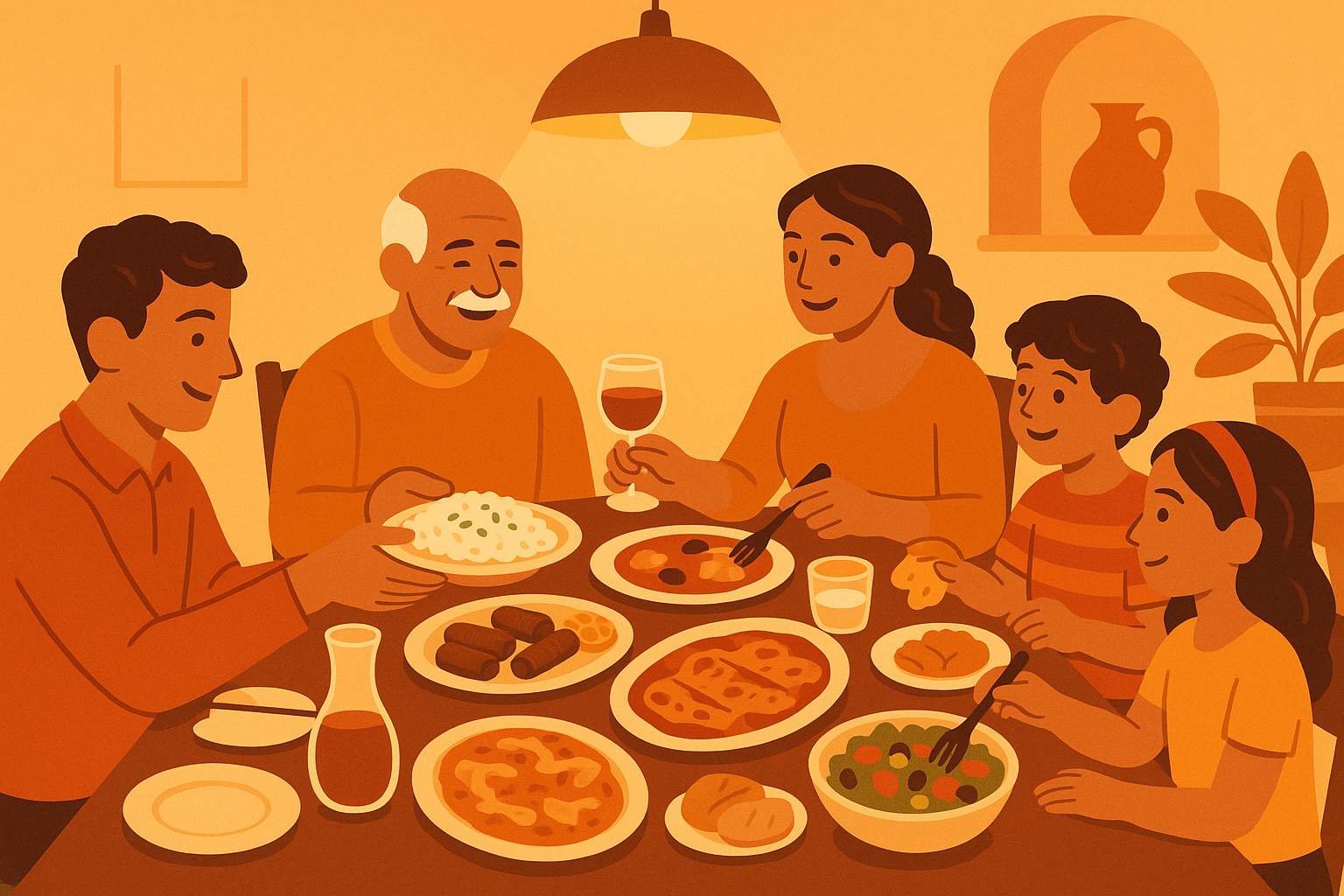
Transforming Meal Plans Into Community Tools
The secret is transforming your individual meal planning into community engagement activities. This creates accountability structures that mirror traditional mediterranean social eating patterns and dramatically increases your chances of sticking with the mediterranean diet long-term.
When your meal plan becomes a tool for connecting with others rather than isolating yourself with “special” dietary requirements, the entire experience shifts from restriction to celebration. The mediterranean approach to eating was always communal – meals were shared experiences that strengthened social bonds.
Family Meal Democracy in Action
Printed meal plans can serve as family negotiation tools, allowing different household members to contribute their preferences while maintaining mediterranean diet principles. This reduces the “special diet” isolation that causes most people to eventually abandon their healthy eating goals.
The mediterranean tradition includes everyone in food decisions, from the youngest children helping choose vegetables at the market to grandparents sharing cooking wisdom. Your meal planning process can recreate this inclusive approach.
Make it work for your family:
- Create meal plan templates with dedicated space for each family member’s input and preferences
- Design voting systems for weekly meal selections that prioritize mediterranean options while including everyone
- Include family cooking assignment charts that distribute meal preparation responsibilities fairly
Building Your Food Community
Look, I get it – you’re not living in a Greek village where everyone gathers for long, leisurely meals. But here’s what you CAN do: get your kids involved in Sunday meal prep, text your neighbor when you’re making extra soup, or start a simple recipe swap with a few friends.
Printed meal plans can facilitate neighborhood-level recipe sharing that recreates the village-style food culture essential to traditional mediterranean eating patterns. This social connection around food is often what’s missing in modern diet attempts.
Create your food network:
- Design meal plans with tear-off recipe cards that make sharing easy and natural
- Create neighborhood meal plan bulletin board systems (even if it’s just with a few neighbors)
- Include space for community member recipe contributions and modifications
Making Food Experimentation Feel Safe
One of the biggest barriers to mediterranean diet success is the anxiety people feel when faced with unfamiliar ingredients and cooking techniques. Printed meal plans can create psychological safety nets for trying new foods by providing structured experimentation frameworks that reduce the overwhelm factor.
Learning to improve digestion naturally becomes much easier when you gradually introduce new mediterranean ingredients using systematic approaches. The key is building confidence through small, manageable steps rather than diving into complex recipes that might intimidate you.
Gradual Flavor Introduction That Actually Works
Want to know what really works? Systematically introducing mediterranean flavors through printed progression charts prevents the overwhelm that causes people to abandon the mediterranean diet when faced with unfamiliar ingredients like sumac, preserved lemons, or za’atar. The challenge is creating a bridge from familiar tastes to mediterranean equivalents without shocking your palate.
Your mediterranean diet success depends heavily on how gradually you introduce new flavors. Rushing this process often leads to rejection of perfectly delicious foods simply because they’re too different from what you’re accustomed to eating.
Build your flavor confidence:
- Create flavor introduction timelines that gradually increase mediterranean ingredient complexity over weeks
- Design taste-testing record sheets for tracking your personal preferences and reactions
- Include “flavor bridge” suggestions that connect tastes you already love to mediterranean equivalents
| Week | New Mediterranean Ingredient | Familiar Flavor Bridge | Simple Introduction Recipe |
|---|---|---|---|
| 1 | Extra Virgin Olive Oil | Butter substitute | Drizzle over toast |
| 2 | Kalamata Olives | Black olives upgrade | Add to salads |
| 3 | Fresh Herbs (basil, oregano) | Dried herbs you know | Sprinkle on tomatoes |
| 4 | Feta Cheese | Tangy cheese alternative | Crumble over vegetables |
| 5 | Za’atar Spice Blend | Seasoning salt upgrade | Mix with olive oil for dipping |
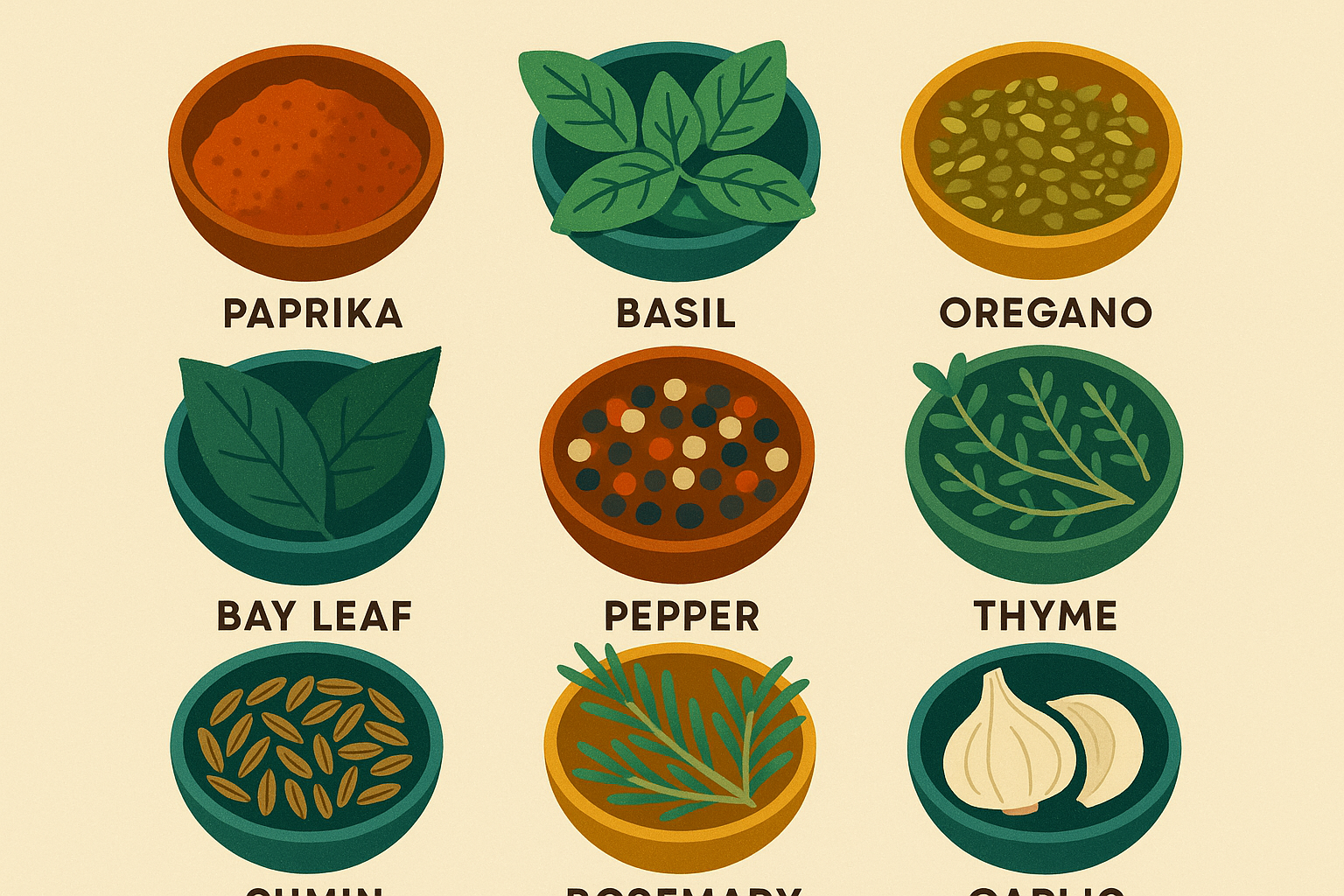
The Social Secret That Makes or Breaks Your Diet Success
Traditional mediterranean eating patterns weren’t individual choices – they were community-wide cultural practices that provided built-in support systems. When you try to follow a mediterranean diet meal plan in isolation, you’re fighting against thousands of years of evolutionary programming that expects food to be a social experience.
The mediterranean approach to eating included extended family meals, community food preparation, and shared cooking knowledge that created natural accountability and support. Modern meal planning needs to recreate these social elements or risk becoming another failed diet attempt.
I’ve found that the most successful mediterranean diet adopters create their own support networks, whether through family involvement, cooking groups, or online communities focused on mediterranean cuisine. The food becomes secondary to the social connections it creates.
Smart Meal Timing That Actually Works
Most mediterranean meal plans focus exclusively on food selection while completely ignoring the meal timing patterns that traditional mediterranean cultures used to optimize metabolic flexibility and longevity. This represents a massive missed opportunity for enhanced results.
The when of eating can be just as important as the what, especially when you’re trying to maximize the mediterranean diet’s benefits. Traditional mediterranean populations naturally incorporated eating patterns that modern science now recognizes as optimal for metabolic health.
Your mediterranean diet meal plan should account for these timing principles rather than treating all meals as equivalent regardless of when you consume them. The research shows that identical meals can have dramatically different effects depending on timing.
Intermittent Fasting Meets Mediterranean Wisdom
Traditional mediterranean eating patterns naturally incorporated fasting periods that modern meal plans should systematically include. This isn’t about extreme restriction – it’s about working with your body’s natural rhythms to maximize the mediterranean diet’s benefits.
Historical mediterranean cultures often had natural fasting periods built into their eating patterns through religious observances, seasonal food scarcity, and daily work rhythms. These weren’t viewed as hardships but as normal parts of healthy living.
Optimizing Your Mediterranean Eating Window
Compressing mediterranean meals into 8-10 hour eating windows while maintaining nutrient density requires specific meal planning strategies that most printable plans completely ignore. The challenge is getting all your essential nutrients within a shorter timeframe without feeling deprived.
Your mediterranean eating window should prioritize nutrient-dense foods that provide maximum nutritional value per calorie. This means emphasizing foods like fatty fish, nuts, olive oil, and vegetables while minimizing empty calories that don’t contribute to your health goals.
Structure your eating window:
- Design meal plans with built-in fasting period calculations that work with your schedule
- Create nutrient density scorecards to ensure you’re getting adequate nutrition within compressed eating windows
- Include hydration and electrolyte management protocols for fasting periods
Exercise + Mediterranean Timing Magic
Timing mediterranean meals around exercise can enhance both athletic performance and the diet’s anti-inflammatory effects. But this requires precise planning that standard meal plans don’t address – you need to know exactly what to eat when for optimal results.
The mediterranean approach to physical activity was naturally integrated into daily life through walking, manual labor, and outdoor activities. Your meal timing should support this active lifestyle rather than working against it.
Coordinate food and fitness:
- Create exercise-coordinated meal timing templates that sync with your workout schedule
- Design pre and post-workout mediterranean snack combinations that fuel performance and recovery
- Include recovery meal templates that optimize protein timing with mediterranean ingredients
David, a marathon runner, discovered that eating a small portion of dates and almonds 30 minutes before his morning run, followed by Greek yogurt with berries within 30 minutes post-workout, dramatically improved his recovery times. He printed out workout-specific meal timing charts that helped him fuel his training while staying true to mediterranean principles, ultimately improving his race times by 8 minutes over six months.
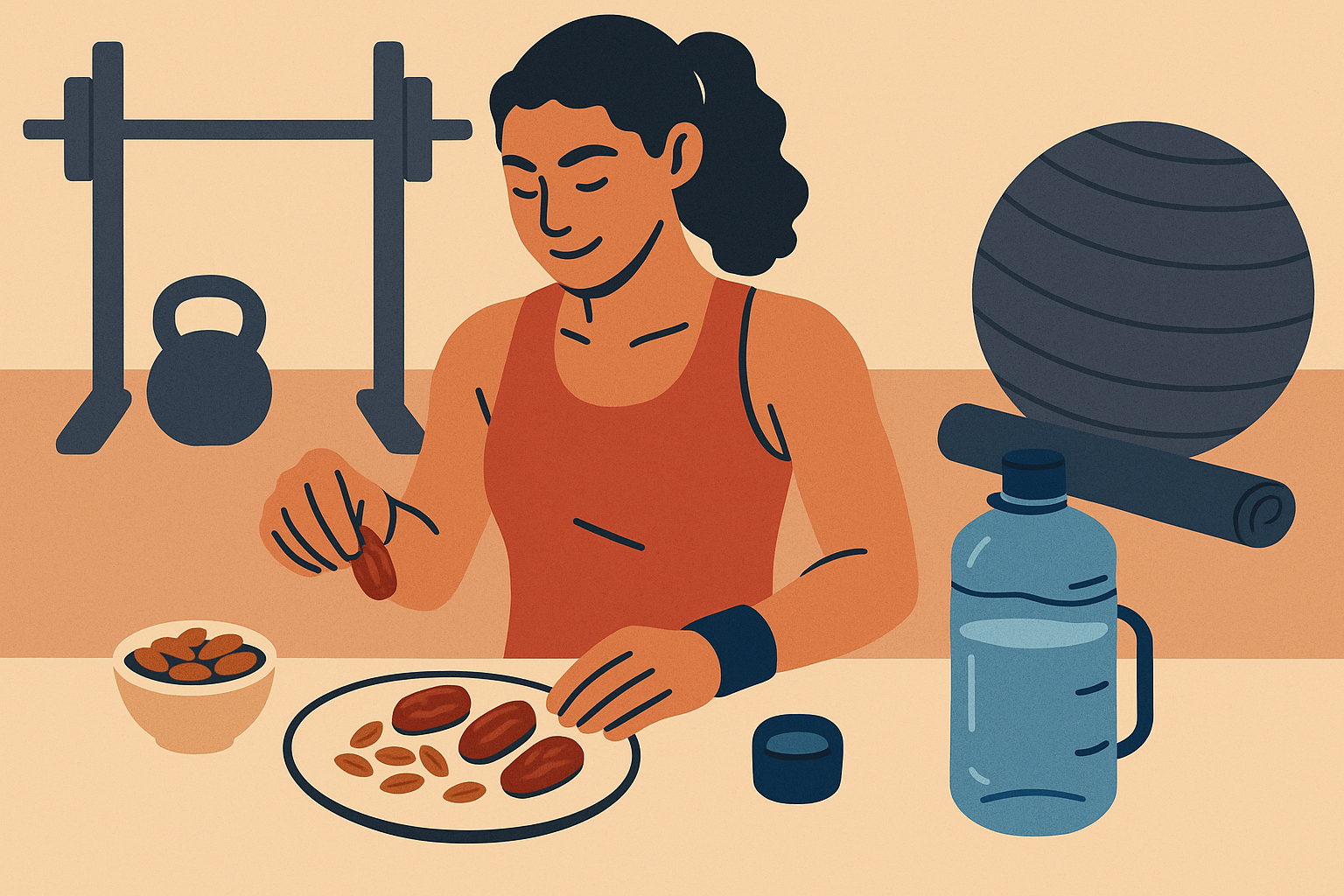
Recipe Psychology: Why Some Mediterranean Dishes Stick and Others Don’t
Ever wonder why some recipes stick and others don’t? It’s usually not the recipe – it’s whether you can actually find the ingredients at your regular grocery store and whether your family will eat it without complaining. There’s a hidden psychology behind why some mediterranean recipes become family favorites while others get tried once and forgotten.
The process of transforming traditional mediterranean recipes into printable, actionable formats requires understanding how recipe transmission actually works and adapting those methods for modern kitchens and ingredient availability.
Most meal plans completely miss this crucial element. They present recipes as static instructions rather than living documents that evolve with your preferences, available ingredients, and cooking skills. The mediterranean diet recipes that stick are those that feel adaptable and forgiving rather than rigid and demanding.
Your relationship with mediterranean cooking should feel exploratory and creative, not restrictive and stressful. Traditional mediterranean cooks didn’t follow exact measurements – they cooked by intuition, season, and availability.
Translating Cultural Recipes for Modern Life
Authentic mediterranean recipes often rely on knowledge and seasonal ingredient flexibility that printable formats must explicitly capture without losing the essence of traditional preparation methods. The challenge is maintaining authenticity while making recipes accessible to people who didn’t grow up in mediterranean food culture.
Understanding sustainable cheese choices becomes essential when adapting traditional mediterranean recipes for modern dietary preferences. The goal is preserving the nutritional and cultural integrity while accommodating contemporary ingredient access and dietary restrictions.
Smart Substitution Systems That Preserve Nutrition
Can’t find za’atar at your local store? Don’t stress. Mix some dried thyme with sesame seeds and a pinch of salt. Not exactly traditional, but it’ll do the job until you can order the real thing online. Creating systematic substitution guides within printed meal plans prevents recipe abandonment when specific mediterranean ingredients aren’t available in your area.
The key is maintaining nutritional integrity while accommodating regional food access limitations – not all substitutions are created equal. Your mediterranean diet success shouldn’t depend on finding exotic ingredients at specialty stores. Traditional mediterranean cooking was based on local, seasonal availability, which means the principles should adapt to your local food environment.
Build your substitution strategy:
- Design substitution matrices that rank alternatives by nutritional similarity, not just taste
- Include local sourcing guides for mediterranean specialty ingredients in your area
- Create seasonal availability charts that suggest optimal timing for ingredient procurement
Simplifying Techniques Without Losing the Magic
Mediterranean cooking techniques like proper olive oil heating, salt-curing methods, and traditional spice combinations need translation into step-by-step printable instructions. The goal is preserving the nutritional and flavor benefits while making them accessible to novice cooks who might feel intimidated.
The mediterranean approach to cooking emphasizes technique over complicated recipes. Once you master a few fundamental methods, you can apply them to countless ingredient combinations.
Master the techniques:
- Create technique cards with visual indicators for proper execution (like oil temperature cues)
- Include troubleshooting guides for common mediterranean cooking failures
- Design skill progression charts that build complexity over your 7-day period
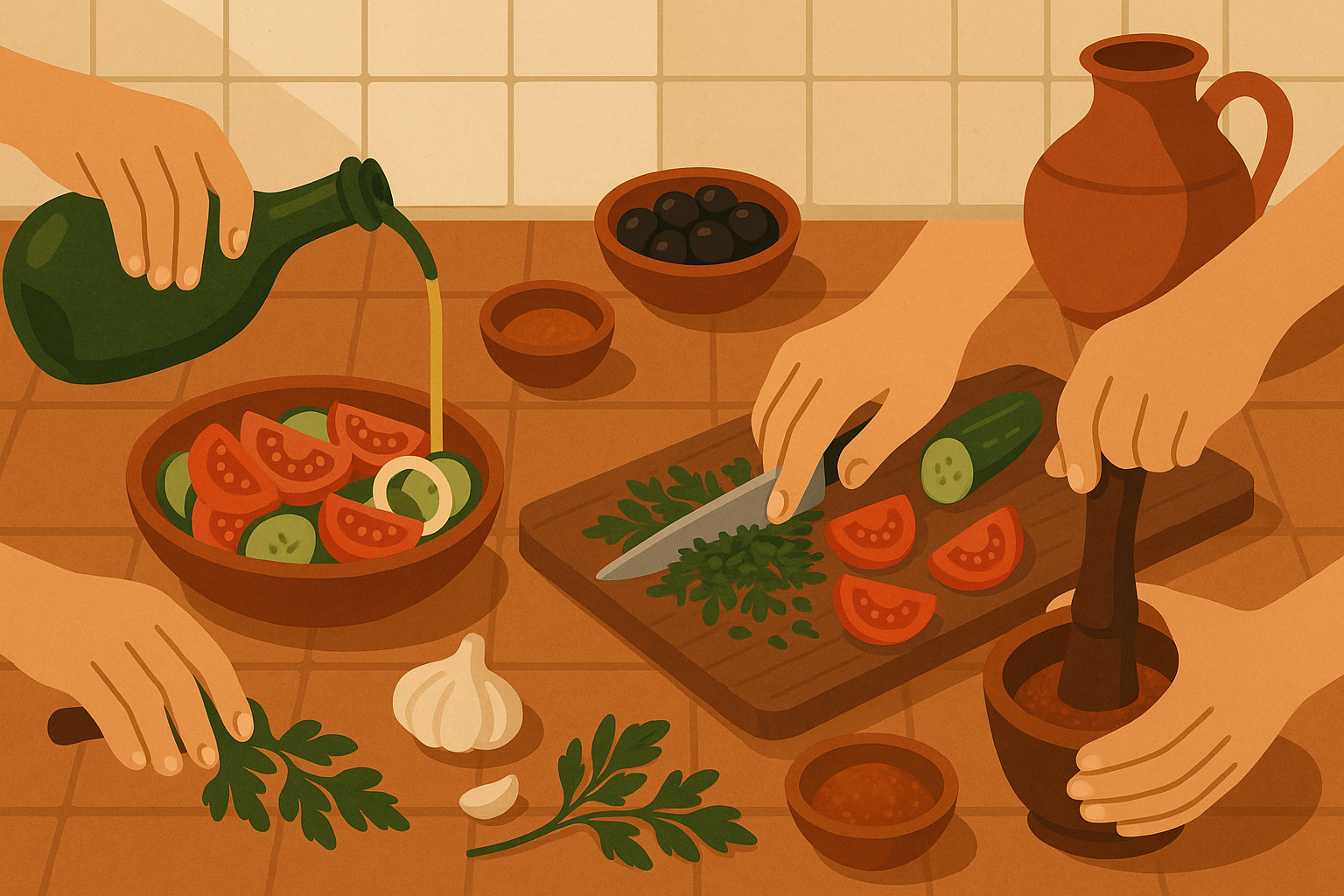
Visual Design That Makes Recipes Memorable
The visual design and layout of printed mediterranean recipes can significantly impact whether you’ll actually remember and successfully execute them. This requires specific formatting approaches that leverage how your brain processes and stores visual information.
Just as quality cookware enhances your cooking experience, proper recipe formatting enhances your learning and retention. The mediterranean tradition of passing down recipes through generations relied heavily on visual and sensory memory rather than written instructions.
Organizing Recipes to Reduce Mental Overload
Mediterranean recipes often involve multiple components and simultaneous cooking processes that can overwhelm novice cooks. Look, portion control doesn’t have to be complicate d. Print out a simple guide and stick it on your fridge. Olive oil? About the size of a quarter. Nuts? What fits in your palm. Done.
Organizing recipe components using visual hierarchy principles reduces cognitive load and increases successful meal completion rates, particularly important for complex dishes like traditional mezze preparations.
Your mediterranean diet experience should feel manageable and enjoyable, not stressful and overwhelming. The visual organization of your recipes can make the difference between cooking confidence and kitchen anxiety.
Design for success:
- Use color coding for ingredient categories – proteins, vegetables, healthy fats each get their own color
- Design time-based visual flows showing which cooking processes happen simultaneously
- Include visual portion guides integrated directly into recipe layouts
Adding Cultural Context That Creates Connection
Including brief cultural contexts and traditional serving suggestions within printed recipes increases emotional connection and long-term adoption of mediterranean eating patterns. People are more likely to repeat recipes that feel meaningful rather than just nutritionally beneficial.
The mediterranean diet succeeds because it connects you to a rich cultural tradition of healthy eating. When recipes include stories about their origins or traditional significance, they become more than just instructions – they become cultural experiences.
Create emotional connections:
- Add cultural story boxes to each recipe explaining traditional significance or family memories
- Include suggested serving environments that help recreate mediterranean dining atmospheres
- Design family-style serving guides that encourage communal eating practices
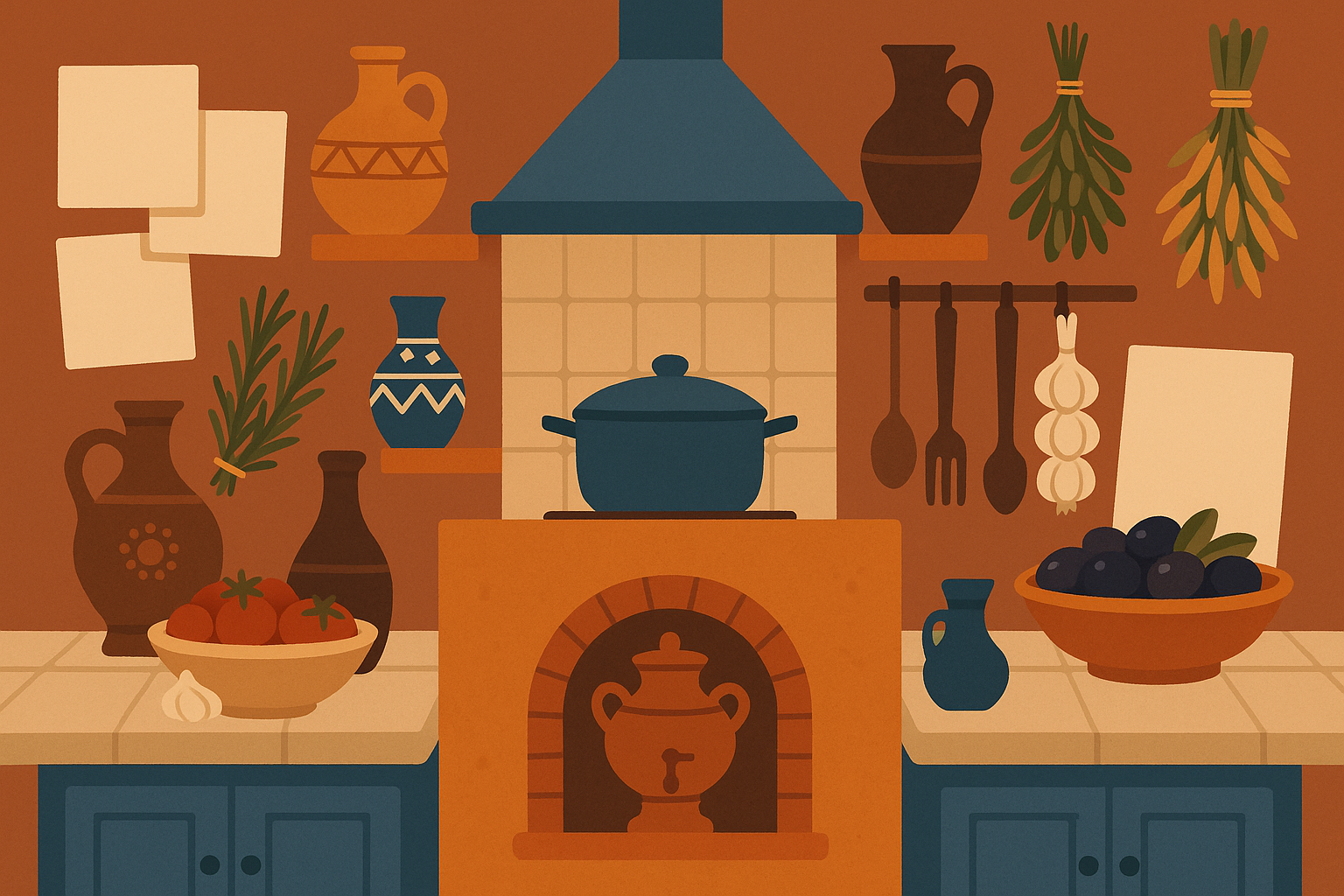
Final Thoughts
Bottom line? The Mediterranean diet works because it’s not really a diet – it’s just eating good food with people you care about. The difference between a mediterranean meal plan that transforms your health and one that ends up forgotten in a drawer isn’t about the recipes – it’s about understanding the psychology, timing, and social elements that make this way of eating sustainable.
When you combine the benefits of printed materials with smart nutrient timing, social support systems, and culturally-informed recipe design, you’re not following a diet – you’re adopting a lifestyle that has sustained healthy populations for centuries.
The key insight here is that successful mediterranean eating isn’t about perfection or strict adherence to rules. It’s about creating systems that work with your brain’s natural learning processes, your body’s natural rhythms, and your social environment. Whether you’re dealing with ingredient availability challenges, family preferences, or time constraints, the principles outlined here can help you adapt mediterranean eating to your real life rather than trying to force your life to fit a rigid mediterranean diet meal plan.
Let’s be honest – most of us aren’t living in a Greek village where everyone gathers for long, leisurely meals. But we can steal some of their secrets without moving to Santorini. Start small, be flexible, and don’t stress about perfection. Your printed meal plan is just a tool to help you get there.
Remember, this isn’t about being perfect. It’s about finding what works for your real life, your real kitchen, and your real family. Start where you are, use what you have, and adjust as you go.

